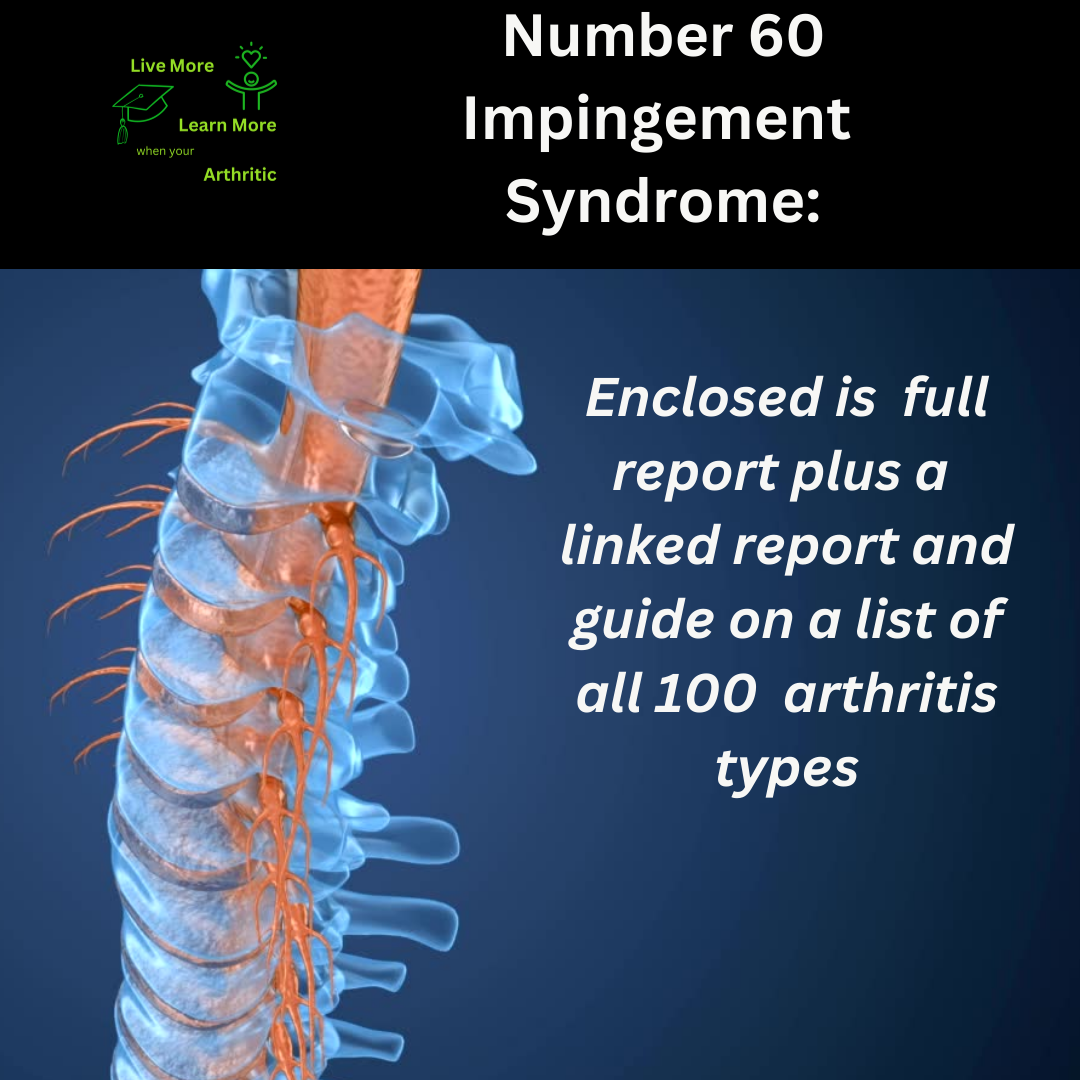
Impingement Syndrome: Number 60 on the list of 100 types of Arthritis
Overcoming Impingement Syndrome: A Personal Journey to Freedom
In the realm of physical challenges, impingement syndrome can cast a shadow over everyday activities, but with resilience and the right approach, it’s possible to reclaim life’s joys. Join me as we explore the depths of this condition, uncovering insights, humor, and hope along the way.
 Unveiling Impingement Syndrome
Unveiling Impingement Syndrome
Impingement syndrome—also known as shoulder impingement—is a common musculoskeletal condition characterized by compression of the tendons and bursa (fluid-filled sacs) within the shoulder joint. This compression leads to inflammation, pain, and restricted movement, impacting the ability to perform overhead activities comfortably.
Description of the Syndrome
Picture your shoulder as a finely tuned machine, with tendons, ligaments, and bursa working in harmony. In impingement syndrome, this delicate balance is disrupted when structures become pinched or squeezed between the bones of the shoulder (the humerus and the acromion).
Causes and Triggers
Impingement syndrome can arise from various factors, including repetitive overhead movements (common in sports like swimming or tennis), shoulder instability, muscle imbalances, or anatomical variations in the shoulder structure. Aging and degenerative changes may also contribute to the development of this condition.
Symptoms and Impact on Quality of Life
The hallmark symptoms of impingement syndrome include shoulder pain (especially with overhead movements), stiffness, and weakness. Individuals may experience difficulty reaching behind their back or overhead, affecting daily tasks such as reaching for items on high shelves or dressing.
Age of Onset and Lifespan Considerations
Impingement syndrome often manifests in individuals between the ages of 30 and 60, although it can occur earlier in athletes or individuals with specific occupational demands. While impingement syndrome itself does not typically shorten lifespan, chronic pain and functional limitations can affect overall quality of life.
Achieving Quality of Life with a Proactive Approach
A proactive approach to managing impingement syndrome involves a combination of targeted exercises, lifestyle modifications, and ergonomic adjustments. Physical therapy focused on strengthening shoulder muscles and improving flexibility can alleviate symptoms and prevent recurrence.
 Possible Complications and Breakthroughs
Possible Complications and Breakthroughs
Complications of untreated impingement syndrome may include rotator cuff tears, shoulder joint degeneration, and chronic pain. Natural therapies such as acupuncture, therapeutic massage, and yoga may complement conventional treatments, offering relief and promoting overall well-being.
Demographics and Gender Disparities
Impingement syndrome affects both men and women, with a higher prevalence observed in individuals engaged in repetitive overhead activities. While the condition can manifest at any age, it often becomes more prevalent with aging and cumulative wear and tear on the shoulder joint.
Interconnected Health Considerations
Individuals with impingement syndrome should be aware of potential interconnected conditions, such as rotator cuff injuries, frozen shoulder (adhesive capsulitis), and cervical spine issues. Comprehensive care involving orthopedic specialists, physical therapists, and pain management experts is essential to optimize treatment outcomes.
In conclusion, impingement syndrome is a hurdle, not a roadblock, on life’s journey. By embracing a proactive approach, leveraging natural therapies, and maintaining a positive mindset, individuals affected by impingement syndrome can regain freedom of movement and rediscover the joy of everyday activities. Together, let’s lift the weight off our shoulders and embrace a life of possibility and resilience!